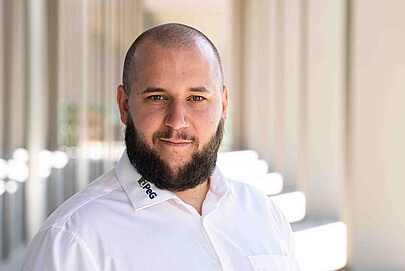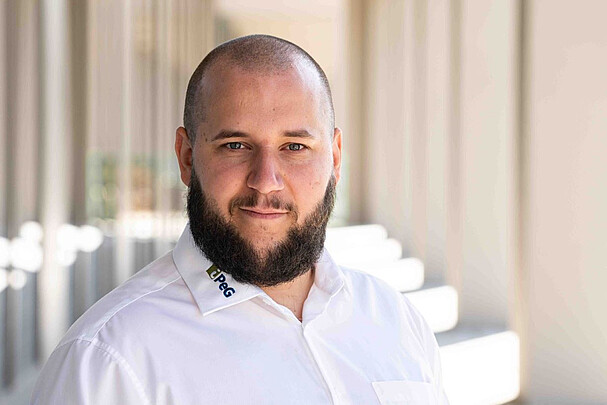Projects
- GROTESK - "Generative manufacturing of optical, thermal and structural components" (EFRE - NBank (ZW6-85018307): - In GROTESK, multifunctional optomechanical assemblies including the optics are being designed for the first time, generatively manufactured from several materials in a single process environment and characterised with regard to the requirements set at the beginning. The aim of the network is the application-orientated research and further development of research results from additive manufacturing. In the joint project, materials and, in particular, material combinations are to be developed and processed in new ways to create functional components such as optical components and optomechanical assemblies. The work to be carried out ranges from material selection, design and simulation to production and final experimental characterisation. Particular emphasis is placed on the optical, thermal and mechanical properties of the components and the associated functionality. The process-related research work is therefore rounded off by comprehensive validation of the desired component properties. Further information can be found at: https://www.grotesk.uni-hannover.de/
- Printed Nanoparticle-infused Waveguides (Cluster of Excellence PhoenixD German Research Foundation, DFG, EXC 2122, Project ID 390833453) - In the PhoenixD Cluster of Excellence, we have set ourselves the goal of revolutionising optical manufacturing. To this end, optical components will increasingly be manufactured using additive manufacturing (AM) processes in the future. This enables greater design complexity, a high degree of functional integration and excellent adaptability to individual requirements. In addition, AM offers the possibility of voxel-wise adjustment of the material composition. A high degree of functional integration is achieved through the in-process introduction of nanoparticles into optical components such as waveguides. The process we have developed is based on freeform reversible embedding technology, which makes it possible to additively process temperature, UV and environmentally stable, highly transparent silicone materials and other viscous liquid materials. Integrated waveguide emitters and waveguide sensors are manufactured using the developed AM process. Our concept for these sensor systems utilises the measurable excitation of fluorescent nanoparticles in printed waveguides to determine induced deformations. Light in the excitation spectrum of the nanoparticles is guided through a deformable waveguide. Depending on the internal reflection within the waveguide, the induced deformation can be measured by analysing the intensity of the emitted fluorescence radiation of the excited nanoparticles.
- Feedback Loop: Generative Optics Design (Cluster of Excellence PhoenixD German Research Foundation, DFG, EXC 2122, Project ID 390833453) - Additive manufacturing processes offer engineers unprecedented design freedom in the development of optical systems. This cannot be meaningfully mapped with development tools designed for classically manufactured optical systems. This project therefore uses the "generative design" approach, in which a highly modifiable model is developed instead of a single rigid system. With the help of this model, a large number of possible alternative solutions can be generated in a short time, which are then automatically evaluated in subsequent steps.
- Additive manufacturing of functionalised silicone optics (SAM - School for Additive Manufacturing, MWK) - In this project, highly transparent silicone is used as an optical material for lenses. As the starting material is liquid, foreign material - e.g. in the form of ferromagnetic particles - can be embedded in the silicone matrix during the additive manufacturing process. With the help of an external magnetic field, the lens can be deformed on a macroscopic scale, thereby switching its optical function.
- Additive Manufacturing of Optical Systems - In this project, we are producing a Raman spectroscope using additive manufacturing technology. The Raman spectrometer is a powerful technique for the highly specific detection of molecular information. It is used in chemical and biological analyses, e.g. for the detection of microplastics and viruses. In the 3D printed Raman spectrometer system, additive manufacturing technology is applied to the optical system. We use additive manufacturing processes such as stereolithography, multi-jet modelling or two-photon polymerisation to produce transparent components with three-dimensional freeforms. In this way, the optical system can be miniaturised and adapted to application-specific requirements. At the same time, additive manufacturing processes for many Raman detection tasks offer an excellent, as yet unexplored opportunity to produce highly specialised and therefore sensitive systems.
Expertise
- Concept development, prototyping and validation of optical systems
- Additive manufacturing of optics and optical systems
- Prototyping of new processes for the additive manufacturing of optics
- Optics simulation (Zemax, COMSOL)
- Optomechanical simulations (COMSOL)
- Laser technology
- Photometric measurements
Equipment
- Clean room
- Laser measurement technology
- Additive learning factory
- Multiphysics test bench
- Mechatronics laboratory






